Engaging Maths
Promoting creative and critical thinking in mathematics and numeracy.
What is critical and creative thinking, and why is it so important in mathematics and numeracy education?
Numeracy is often defined as the ability to apply mathematics in the context of day to day life. However, the term ‘critical numeracy’ implies much more. One of the most basic reasons for learning mathematics is to be able to apply mathematical skills and knowledge to solve both simple and complex problems, and, more than just allowing us to navigate our lives through a mathematical lens, being numerate allows us to make our world a better place.
The mathematics curriculum in Australia provides teachers with the perfect opportunity to teach mathematics through critical and creative thinking. In fact, it’s mandated. Consider the core processes of the curriculum. The Australian Curriculum (ACARA, 2017), requires teachers to address four proficiencies : Problem Solving, Reasoning, Fluency, and Understanding. Problem solving and reasoning require critical and creative thinking (). This requirement is emphasised more heavily in New South wales, through the graphical representation of the mathematics syllabus content , which strategically places Working Mathematically (the proficiencies in NSW) and problem solving, at its core. Alongside the mathematics curriculum, we also have the General Capabilities , one of which is Critical and Creative Thinking – there’s no excuse!
Critical and creative thinking need to be embedded in every mathematics lesson . Why? When we embed critical and creative thinking, we transform learning from disjointed, memorisation of facts, to sense-making mathematics. Learning becomes more meaningful and purposeful for students.
How and when do we embed critical and creative thinking?
There are many tools and many methods of promoting thinking. Using a range of problem solving activities is a good place to start, but you might want to also use some shorter activities and some extended activities. Open-ended tasks are easy to implement, allow all learners the opportunity to achieve success, and allow for critical thinking and creativity. Tools such as Bloom’s Taxonomy and Thinkers Keys are also very worthwhile tasks. For good mathematical problems go to the nrich website . For more extended mathematical investigations and a wonderful array of rich tasks, my favourite resource is Maths300 (this is subscription based, but well worth the money). All of the above activities can be used in class and/or for homework, as lesson starters or within the body of a lesson.

Will critical and creative thinking take time away from teaching basic concepts?
No, we need to teach mathematics in a way that has meaning and relevance, rather than through isolated topics. Therefore, teaching through problem-solving rather than for problem-solving. A classroom that promotes and critical and creative thinking provides opportunities for:
- higher-level thinking within authentic and meaningful contexts;
- complex problem solving;
- open-ended responses; and
- substantive dialogue and interaction.
Who should be engaging in critical and creative thinking?
Is it just for students? No! There are lots of reasons that teachers should be engaged with critical and creative thinking. First, it’s important that we model this type of thinking for our students. Often students see mathematics as black or white, right or wrong. They need to learn to question, to be critical, and to be creative. They need to feel they have permission to engage in exploration and investigation. They need to move from consumers to producers of mathematics.
Secondly, teachers need to think critically and creatively about their practice as teachers of mathematics. We need to be reflective practitioners who constantly evaluate our work, questioning curriculum and practice, including assessment, student grouping, the use of technology, and our beliefs of how children best learn mathematics.
Critical and creative thinking is something we cannot ignore if we want our students to be prepared for a workforce and world that is constantly changing. Not only does it equip then for the future, it promotes higher levels of student engagement, and makes mathematics more relevant and meaningful.
How will you and your students engage in critical and creative thinking?

Share this:
[…] of this recognition that the 1940s menu makes a perfect stimulus for mathematical investigation and critical thinking. The links between mathematics and children’s lives are not always obvious for students, so […]
[…] several of my previous posts I discussed the importance of promoting critical thinking in mathematics teaching and learning. I’ve also discussed at length various ways to contextualise […]
Leave a comment Cancel reply

- Already have a WordPress.com account? Log in now.
- Subscribe Subscribed
- Copy shortlink
- Report this content
- View post in Reader
- Manage subscriptions
- Collapse this bar
Check Out the New Website Shop!

Novels & Picture Books

Anchor Charts

- Critical Thinking
How To Encourage Critical Thinking in Math
By Mary Montero
Share This Post:
- Facebook Share
- Twitter Share
- Pinterest Share
- Email Share
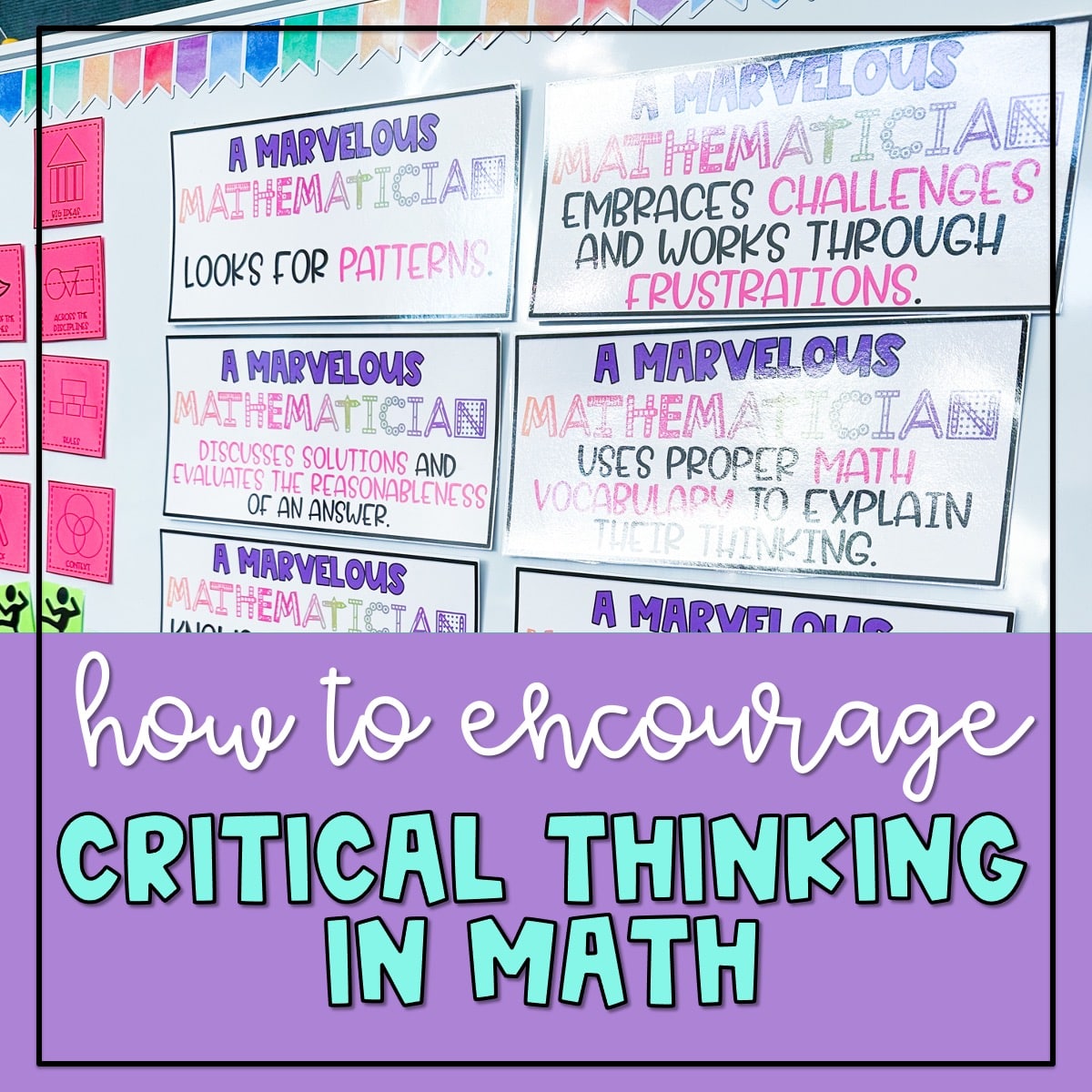
Critical thinking is more than just a buzzword… It’s an essential skill that helps students develop problem-solving abilities and make logical connections between different concepts. By encouraging critical thinking in math, students learn to approach problems more thoughtfully, they learn to analyze and evaluate math concepts, identify patterns and relationships, and explore different strategies for finding the solution. Critical thinking also involves a great deal of persistence. Those are critical life skills!
When you think about it, students are typically asked to solve math problems and find the answer. Showing their work is frequently stressed too, which is important, but not the end. Instead, students need to be able to look at math in different ways in order to truly grasp a complete understanding of math concepts. Mathematics requires logical reasoning, problem-solving, and abstract thinking.
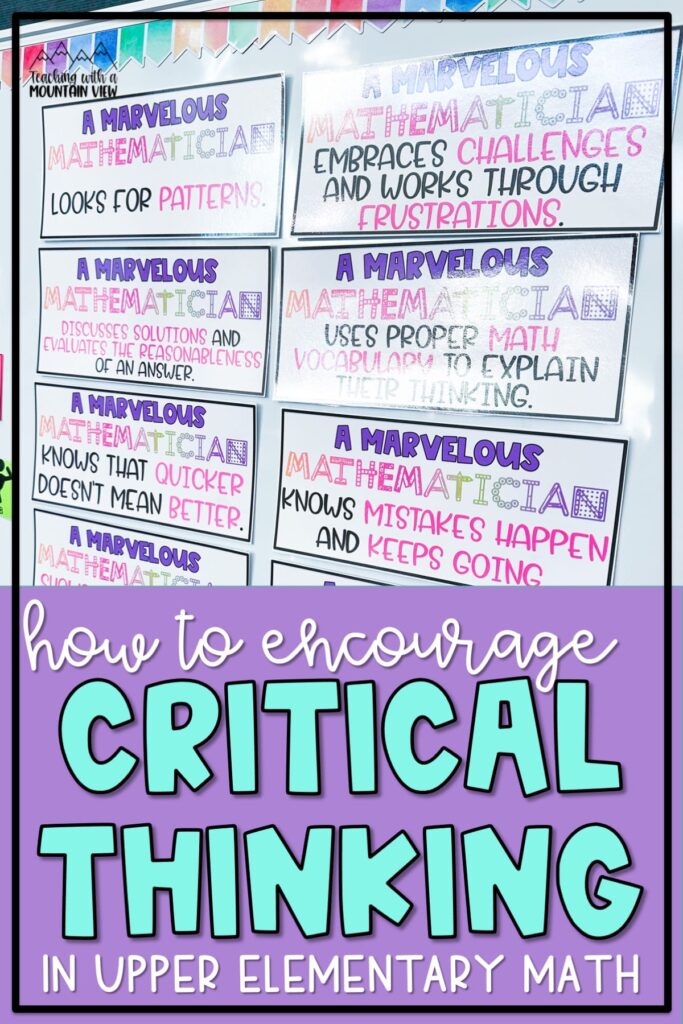
What Does Critical Thinking in Math Look Like?
When I think about critical thinking in math, I focus on:
- Solving problems through logical thinking . Students learn how to break down complex problems, analyze the different parts, and understand how they fit together logically.
- Identifying patterns and making connections. Students learn how to identify patterns across different math concepts, make connections between seemingly unrelated topics, and develop a more in-depth understanding of how math works.
- Evaluating and comparing solutions. Students learn to evaluate which solution is best for a given problem and identify any flaws in their reasoning or others’ reasoning when looking at different solutions
Mathematician Posters
These FREE Marvelous Mathematician posters have been a staple in my classroom for the last 8+ years! I first started using a version from MissMathDork and adapted them for my classroom over the years.
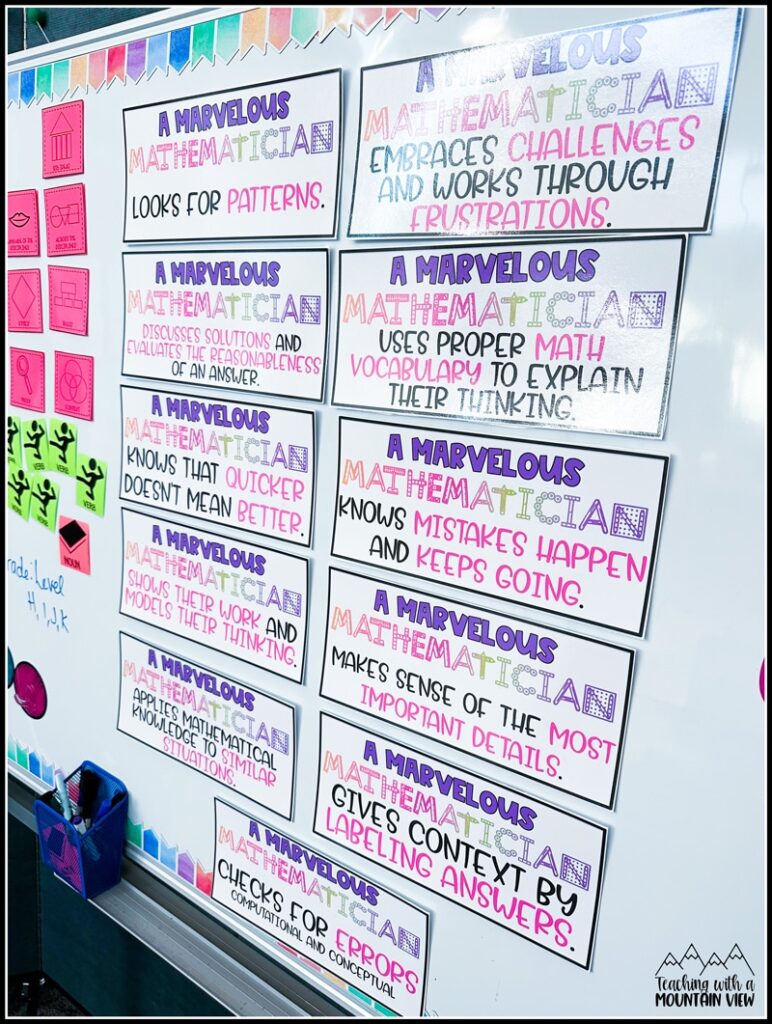
I print, laminate, and add magnetic stickers on the back. At the beginning of the year, I only put one or two up at a time depending on our area of focus. Now, they are all hanging on my board, and I’ll pull out different ones depending on our area of focus. They are so empowering to my mathematicians and help them stay on track!
A Marvelous Mathematician:
- knows that quicker doesn’t mean better
- looks for patterns
- knows mistakes happen and keeps going
- makes sense of the most important details
- embraces challenges and works through frustrations
- uses proper math vocabulary to explain their thinking
- shows their work and models their thinking
- discusses solutions and evaluates reasonableness
- gives context by labeling answers
- applies mathematical knowledge to similar situations
- checks for errors (computational and conceptual)
Critical Thinking Math Activities
Here are a few of my favorite critical thinking activities.
Square Of Numbers
I love to incorporate challenge problems (use Nrich and Openmiddle to get started) because they teach my students so much more than how to solve a math problem. They learn important lessons in teamwork, persistence, resiliency, and growth mindset. We talk about strategies for tackling difficult problems and the importance of not giving up when things get hard.
This square of numbers challenge was a hit!
ALL kids need to feel and learn to embrace challenge. Oftentimes, kids I see have rarely faced an academic challenge. Things have just come easy to them, so when it doesn’t, they can lack strategies that will help them. In fact, they will often give up before they even get started.
I tell them it’s my job to make sure I’m helping them stretch and grow their brain by giving them challenges. They don’t love it at first, but they eventually do!
This domino challenge was another one from Nrich . I’m always on the hunt for problems like this!! How would you guide students toward an answer??


Fifteen Cards
This is a well-loved math puzzle with my students, and it’s amazing for encouraging students to consider all options when solving a math problem.
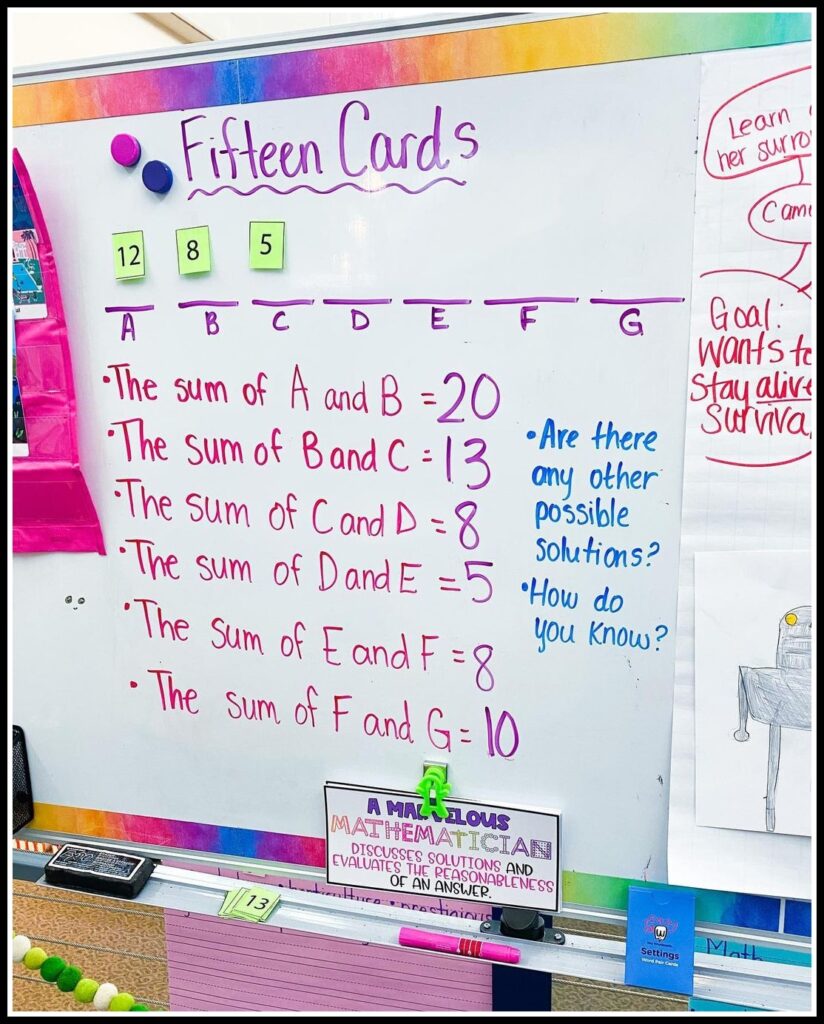
We have number cards 1-15 (one of each number) and only seven are laid out. With the given clues, students need to figure out which seven cards should be put out and in what order. My students love these, and after they’ve done a few, they enjoy creating their own, too! Use products, differences, and quotients to increase the challenge.
This is also adapted from Nrich, which is an AMAZING resource for math enrichment!
This is one of my favorite fraction lessons that I’ve done for years! Huge shout out to Meg from The Teacher Studio for this one. I give each child a slip of paper with this figure and they have to silently write their answer and justification. Then I tally up the answers and have students take a side and DEBATE with their reasoning! It’s an AMAZING conversation, and I highly recommend trying it with your students.
Sometimes we leave it hanging overnight and work on visual models to make some proofs.
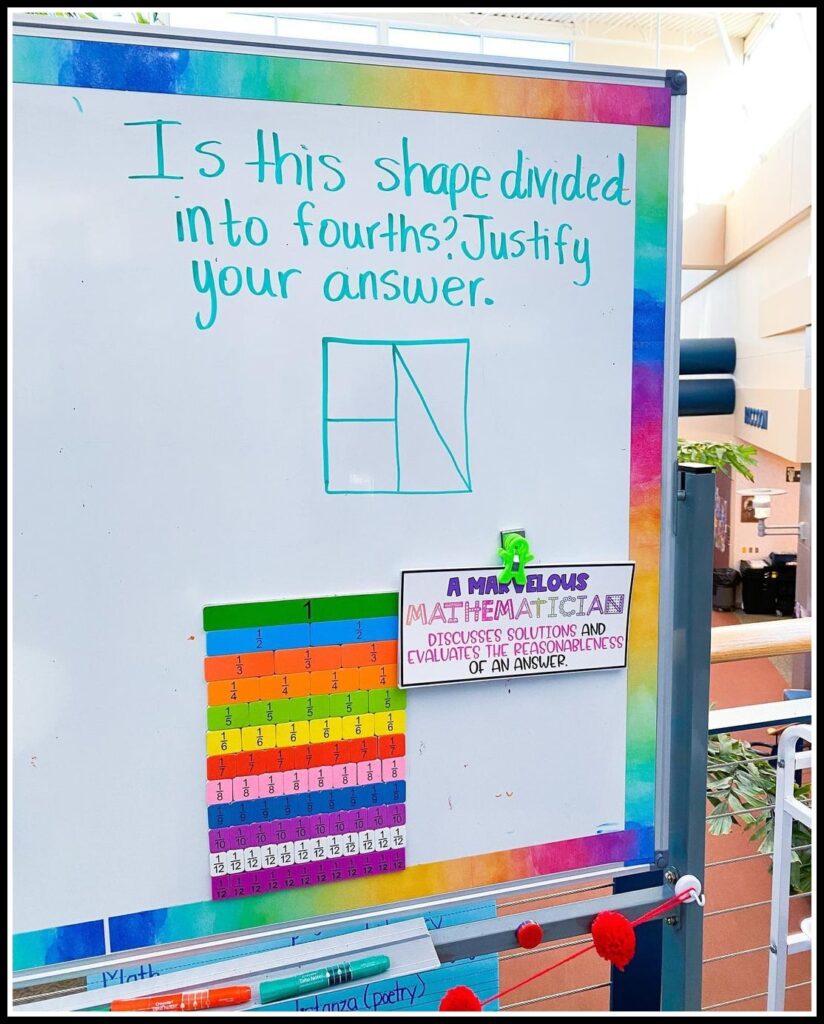
Logic Puzzles
Logic puzzles are always a hit too! You can enrich and extend your math lessons with these ‘Math Mystery’ logic puzzles that are the perfect challenge for 4th, 5th, and 6th grades. The puzzles are skills-based, so they integrate well with almost ANY math lesson. You can use them to supplement instruction or challenge your fast-finishers and gifted students… all while encouraging critical thinking about important math skills!
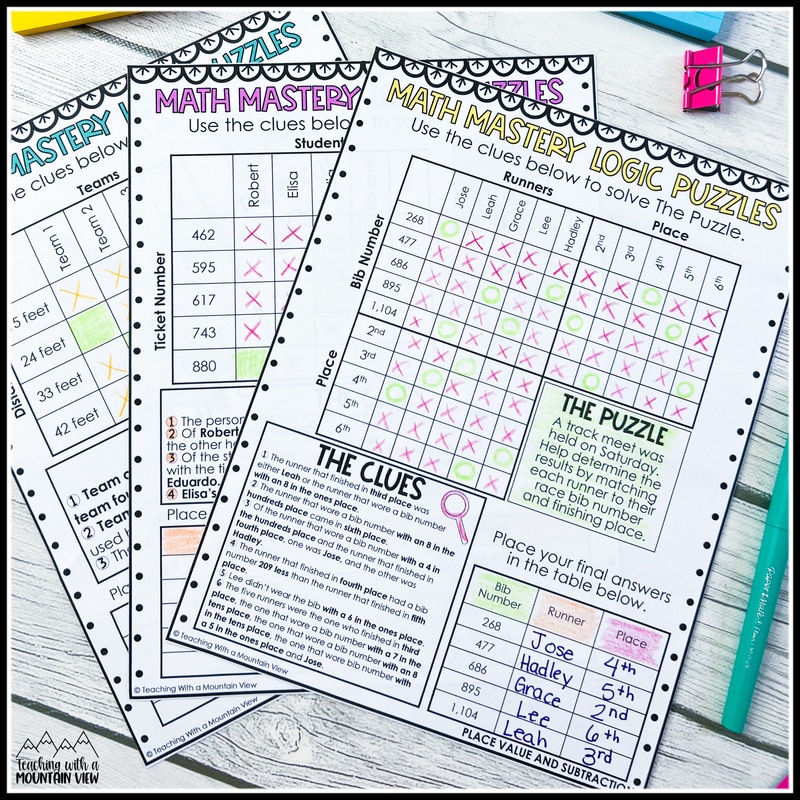
Three levels are included, so they’re perfect to use for differentiation.
- Introductory logic puzzles are great for beginners (4th grade and up!)
- Advanced logic puzzles are great for students needing an extra challenge
- Extra Advanced logic puzzles are perfect for expert solvers… we dare you to figure these puzzles out!
Do you have a group of students who are ready for more of a fraction challenge? My well-loved fraction puzzlers are absolutely perfect for fraction enrichment. They’ll motivate your students to excel at even the most challenging tasks!
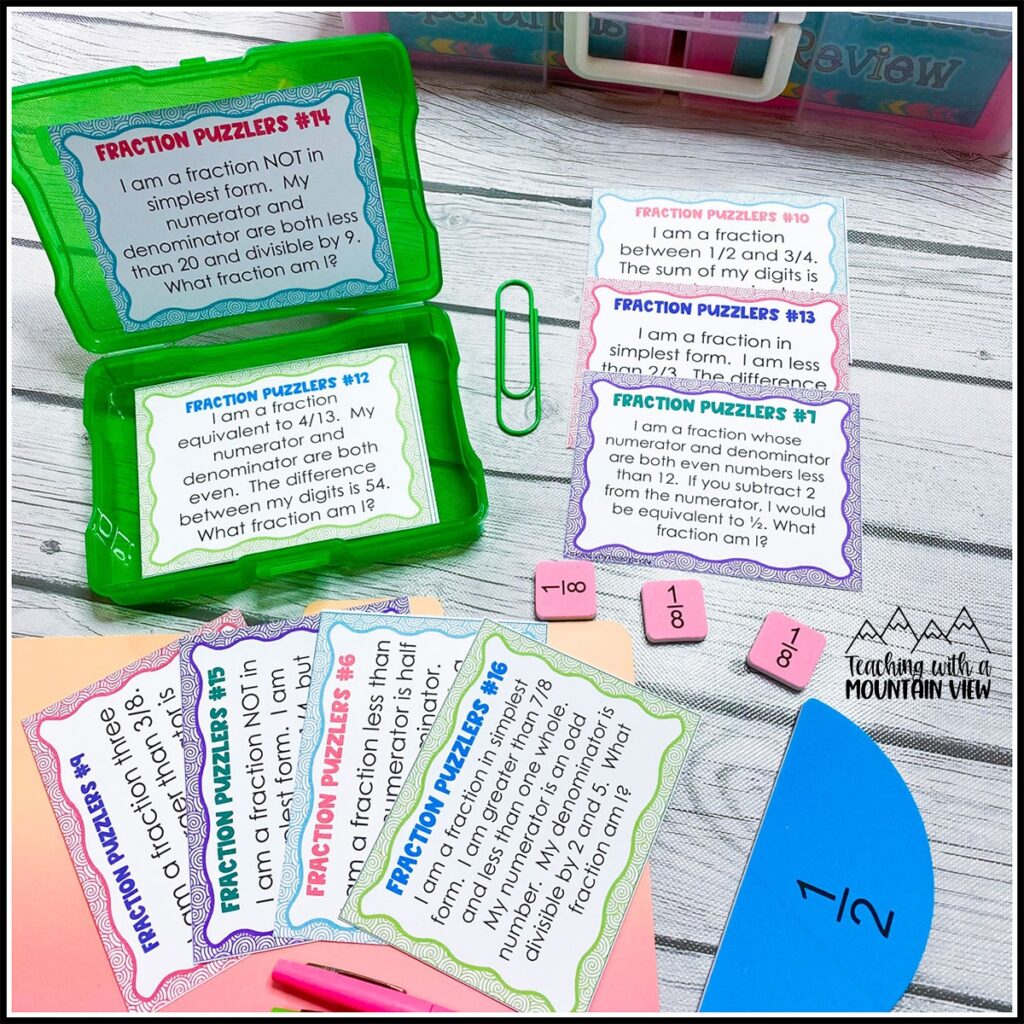
Math Projects
Math projects are another way to differentiation while building critical thinking skills. Math projects hold so much learning power with their real-world connections, differentiation options, collaborative learning opportunities, and numerous avenues for cross curricular learning too.
If you’re new to math projects, I shared my best tips and tricks for using math projects in this blog post . They’re perfect for cumulative review, seasonal practice, centers, early finisher work, and more.
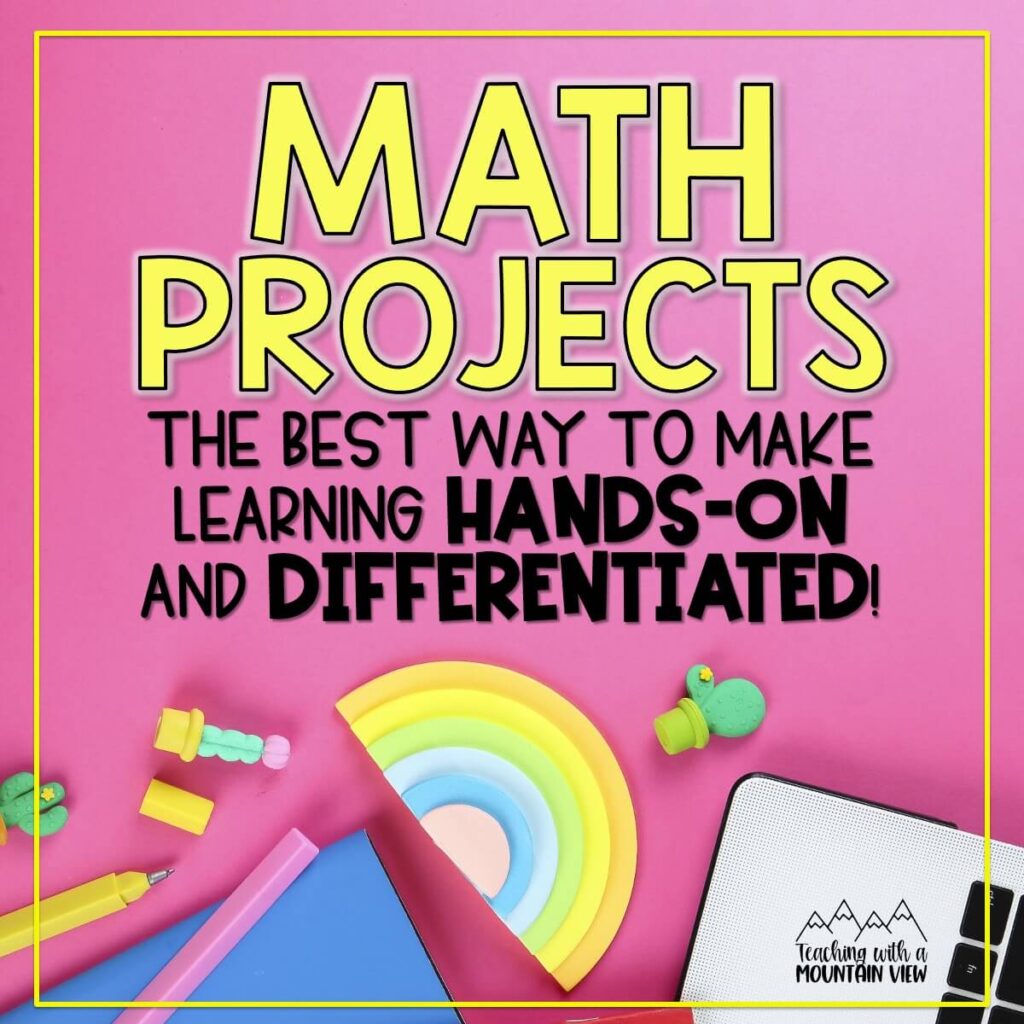
I use both concept-based math projects to focus on specific standards and seasonal math projects that integrate several skills.
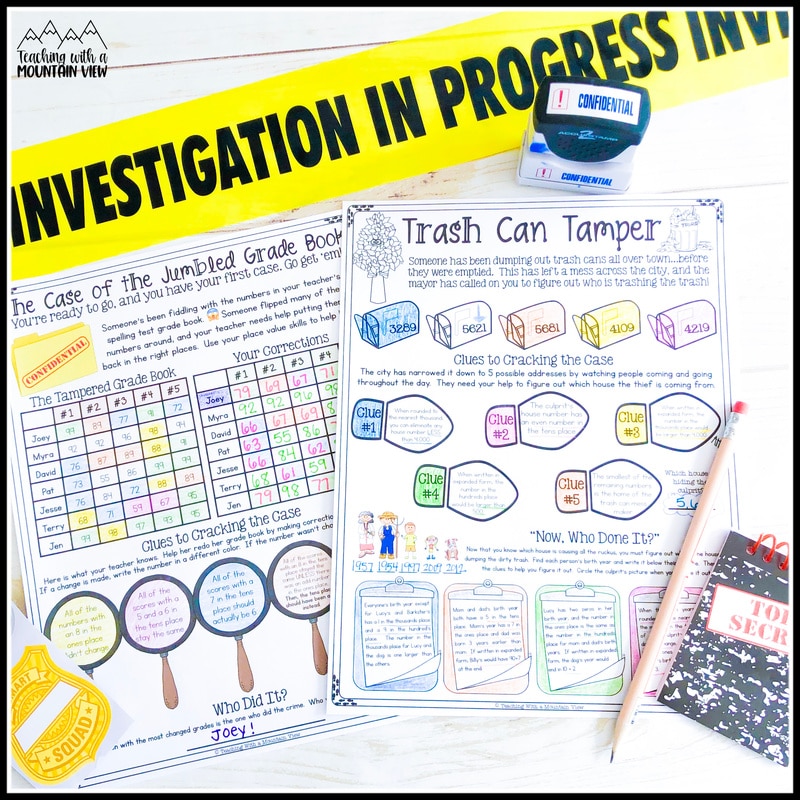
Error Analysis
Finally, error analysis is always a challenging way to encourage critical thinking. When we use error analysis, we encourage students to analyze their own mistakes to prevent making the same mistakes in the future.
For my gifted students, I use error analysis tasks as an assessment when they have shown mastery of a unit during other tasks. For students in the regular classroom needing enrichment, I usually have them complete the tasks in a center or with a partner.
For students needing extra support, we complete error analysis in small groups. We go step-by-step through the concept and they are always able to eventually identify what the error is. It is so empowering to students when they finally figure out the error AND it helps prevent them from making the same error in the future!
My FREE addition error analysis is a good place to start, no matter the grade level. I show them the process of walking through the problem and how best to complete an error analysis task.
When you’re ready for more, this bundle of error analysis tasks contains more than 240 tasks to engage and enrich your students in critical thinking practice.

If you want to dig even deeper, visit this conceptual vs computational error analysis post to learn more about using error analysis in the classroom.
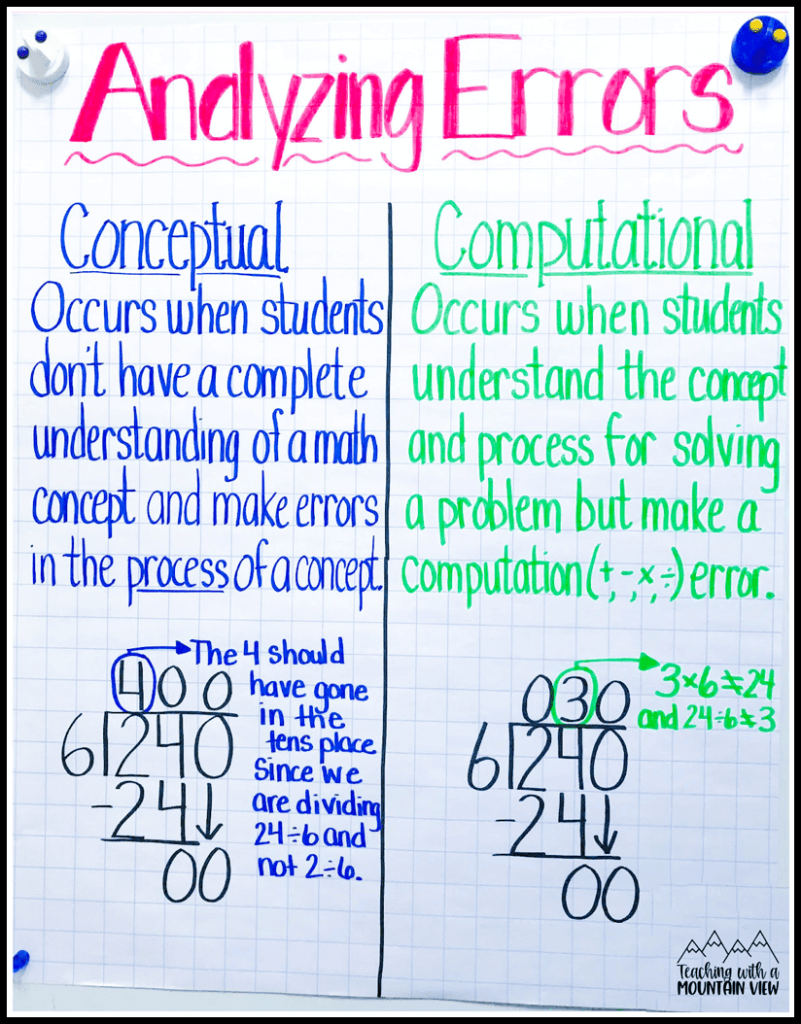
Related Critical Thinking Posts
- How to Increase Critical Thinking and Creativity in Your “Spare” Time
- More Tips to Increase Critical Thinking
Critical thinking is essential for students to develop a deeper understanding of math concepts, problem-solving skills, and a stronger ability to reason logically. When you learn how to encourage critical thinking in math, you’re setting your students up for success not only in more advanced math subjects they’ll encounter, but also in life.
How do you integrate critical thinking in your classroom? Come share your ideas with us in our FREE Inspired In Upper Elementary Facebook group .

Mary Montero
I’m so glad you are here. I’m a current gifted and talented teacher in a small town in Colorado, and I’ve been in education since 2009. My passion (other than my family and cookies) is for making teachers’ lives easier and classrooms more engaging.
You might also like…

Leave a Reply Cancel reply
Your email address will not be published. Required fields are marked *
One Comment
Mary Thankyou for your inspirational activities. I have just read and loved the morning talk activities. I do have meetings with my students but usually at end of day. What time do you

©2023 Teaching With a Mountain View . All Rights Reserved | Designed by Ashley Hughes
Username or Email Address
Remember Me
Lost your password?
Review Cart
No products in the cart.

IMAGES
VIDEO
COMMENTS
Why You Need to Be Teaching Writing in Math Class Today; How to Teach Problem Solving for Mathematics; Turn the Bloom’s Taxonomy Verbs into Engaging Math Activities.…
Discover how critical thinking can help with real-world problem solving, using examples and activities like asking questions, bellringers, puzzles, and project-based learning.
What is critical thinking? It’s the ability to: . solve problems. make products that are valued in a particular culture. be flexible, creative, and original. think about thinking. locate the appropriate …
Reasoning tasks promote critical and creative thinking in maths. Most primary teachers think of problem solving, one of the four mathematics proficiencies where children inquire into real world problems or solve open tasks.
The purpose of this study was to determine the improvement of critical thinking skills in mathematics by applying Connecting, Reflecting, Organizing, and Extending (CORE) learning.
A classroom that promotes and critical and creative thinking provides opportunities for: higher-level thinking within authentic and meaningful contexts; complex problem solving; open-ended responses; and; substantive …
By encouraging critical thinking in math, students learn to approach problems more thoughtfully, they learn to analyze and evaluate math concepts, identify patterns and relationships, and explore different strategies for finding the …
When we critique mathematical ideas or solutions, we are reflecting on what we can see. It also offers the opportunity to consider and discuss alternative viewpoints. Critiquing …